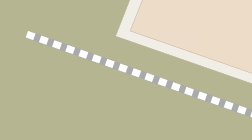ES:Key:construction
 |
| Descripción |
|---|
| Esta clave se usa junto con las etiquetas de nivel superior building/highway/railway/landuse=construction para describir el tipo de característica que se encuentra en construcción. |
| Grupo: ciclo vital |
| Usado en estos elementos |
| Combinaciones útiles |
| Véase también |
|
| Estado: de facto |
| Herramientas para esta etiqueta |
Esta clave se utiliza junto con las etiquetas de nivel superior building=construction, highway=construction, landuse=construction o railway=construction para describir el tipo de característica que se encuentra actualmente en construcción. Para otras etiquetas de nivel superior, p.ej. leisure=*, utilice en su lugar un prefijo de ciclo de vida: construction:leisure=playground.
Los grandes proyectos de construcción de carreteras y ferrocarriles suelen tardar varios años en completarse. Utilice esta clave para indicar sitios de construcción activos. Para proyectos en planificación, donde hay poca o ninguna evidencia de ellos en el terreno, evite etiquetarlos o use proposed=* en su lugar.
Las características ya existentes pueden cerrarse por un corto tiempo para construcción temporal (por ejemplo, carreteras viejas y dañadas que se reconstruyen o una carretera cerrada durante un fin de semana para reemplazar una tubería de alcantarillado). No utilice construction=* para etiquetar dichos cierres a corto plazo; considere usar conditional restrictions en su lugar. Como los datos de OSM se utilizan a menudo fuera de línea (y, por lo tanto, pueden tener varios meses de antigüedad), solo etiquete los sitios de construcción (particularmente carreteras y ferrocarriles) si se planea que estén cerrados durante al menos seis a nueve meses.
Uso
Use in well defined combinations of building=construction, highway=construction, landuse=construction or railway=construction + construction=value. The value of the construction=* key should be one of those defined bellow and indicates the type of feature being built (you can use any value from from highway=*, railway=* and building=*). For example: highway=construction+construction=primary describes a highway which is under construction and its type after the construction has finished will be primary.
A deprecated option is to set the tag construction=yes. While this allows you to tag just about any feature as being "under construction", it won't be supported by the map renderers and other data consumers, and is therefore not recommended. A lifecycle prefix is usually the preferable alternative for such features.
If you know the date at which a construction site is expected to be completed, you can tag it with opening_date=*. Additionally, you can use check_date=* to denote when you last checked/updated the values (this can be useful as large construction projects are often delayed).
For instance, to tag a residential road under construction, use highway=construction and construction=residential. To tag a tramway under construction, use railway=construction and construction=tram.
Highways
In addition to using highway=construction, you should also tag the type of highway being built by using construction=*. For instance, to mark a primary road under construction, tag it with highway=construction and construction=primary.
For minor road-works (where the road in question remains open), use construction=minor (and don't use highway=construction, but leave it at its default value).
Values
highway=construction with any of the following values for construction=* will render on the default Mapnik layer at zoom level 12 and above:
| Value | Element | Comment | Rendering |
|---|---|---|---|
motorway |
Motorway under construction | 
| |
motorway_link |
Motorway sliproad under construction | ||
trunk |
Important non-motorway road under construction | ||
trunk_link |
Sliproad to an important non-motorway road under construction | ||
primary |
Primary road under construction | 
| |
primary_link |
Sliproad to a primary road under construction | ||
secondary |
Secondary road under construction | 
| |
tertiary |
Tertiary road under construction | 
| |
unclassified |
Unclassified road under construction (alternatively tag construction=minor) |

| |
residential |
Residential road under construction | 
| |
pedestrian |
Pedestrianised road under construction | ||
service |
Service road under construction | ||
track |
Track under construction | ||
bridleway |
Bridleway under construction | ||
cycleway |
Cycleway under construction | ||
footway |
Foot path under construction (alternative tag <construction=footpath>) | ||
steps |
Steps under construction |
In all cases, the way will be rendered as a dashed version of the corresponding highway=* tag.
Railways
Similarly to highways above, tag the railway under construction with railway=construction and the type of railway being built with construction=*. The following values for construction=* will render on Osmarender at zoom levels 14 and above:
| Value | Element | Comment | Example |
|---|---|---|---|
rail |
Standard gauge railway under construction | 
| |
narrow_gauge |
Narrow gauge railway under construction | ||
light_rail |
Light-railway under construction | ||
tram |
Tramway under construction | ||
preserved |
Preserved railway under construction e.g. for steam trains | ||
subway |
Subway under construction | 
| |
monorail |
Monorail under construction |
In all cases, the way will be rendered as a dashed version of the corresponding railway=* tag.
Notes
Since most construction sites are not accessible to the public, it might be tough to get detailed GPS tracks of roads which have not yet been built. In that case, it's usually sufficient to roughly trace the route, and increase the detail level once the road is open.
See Also
proposed=*, for features which are being planned, but for which construction has not yet started.